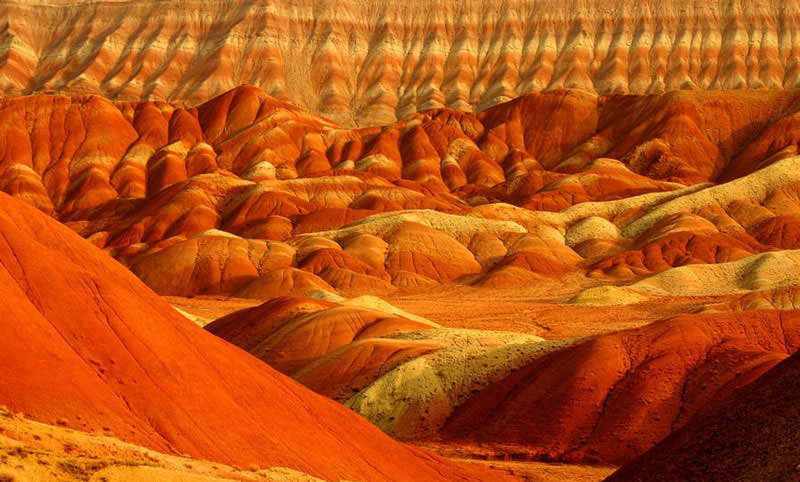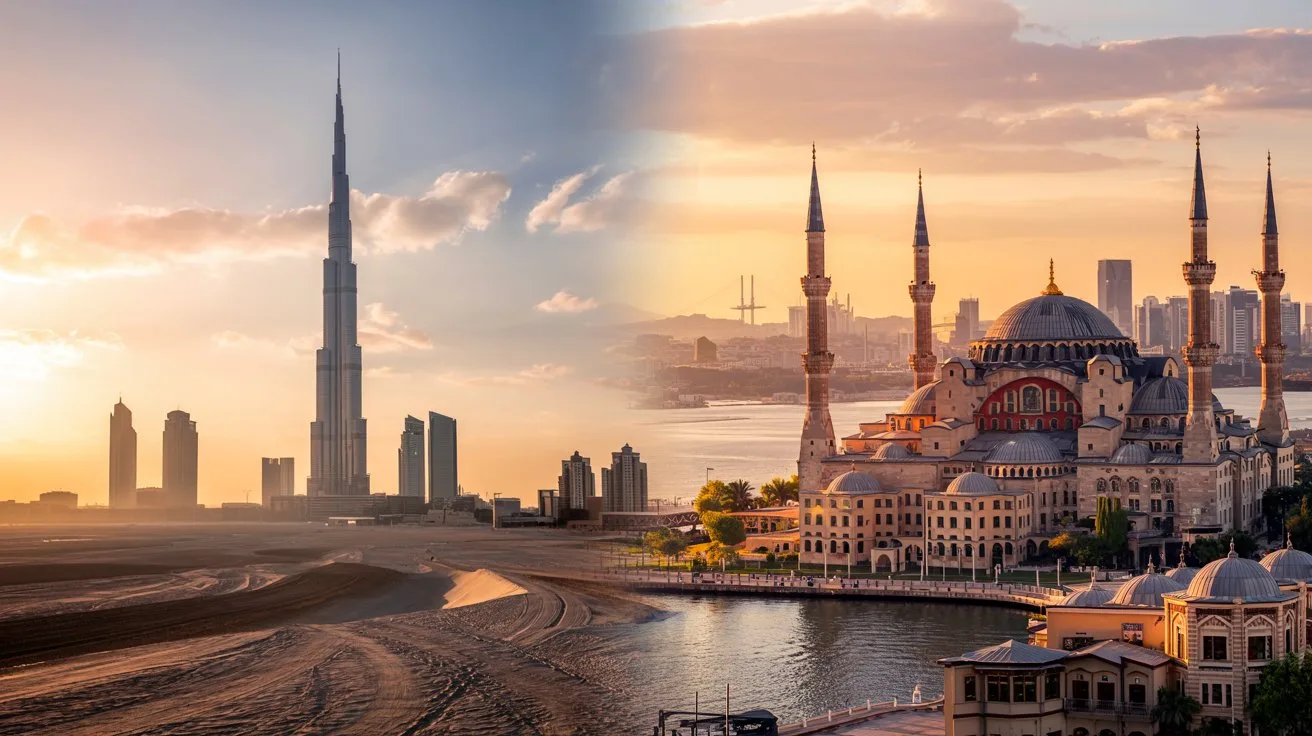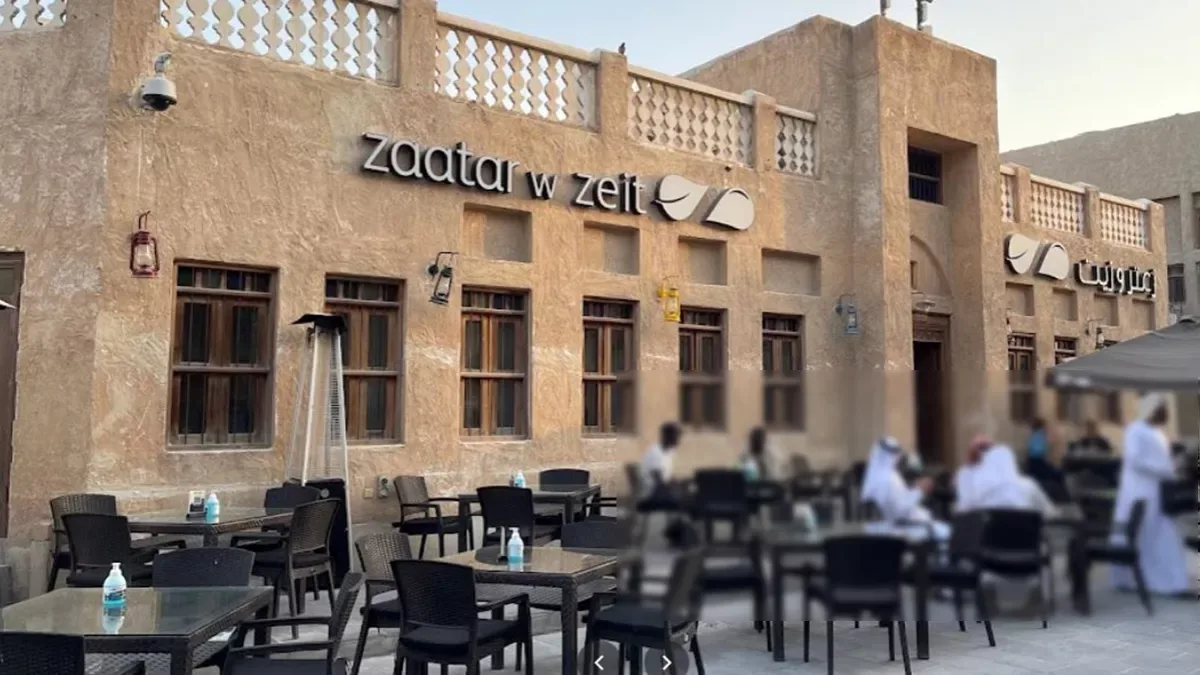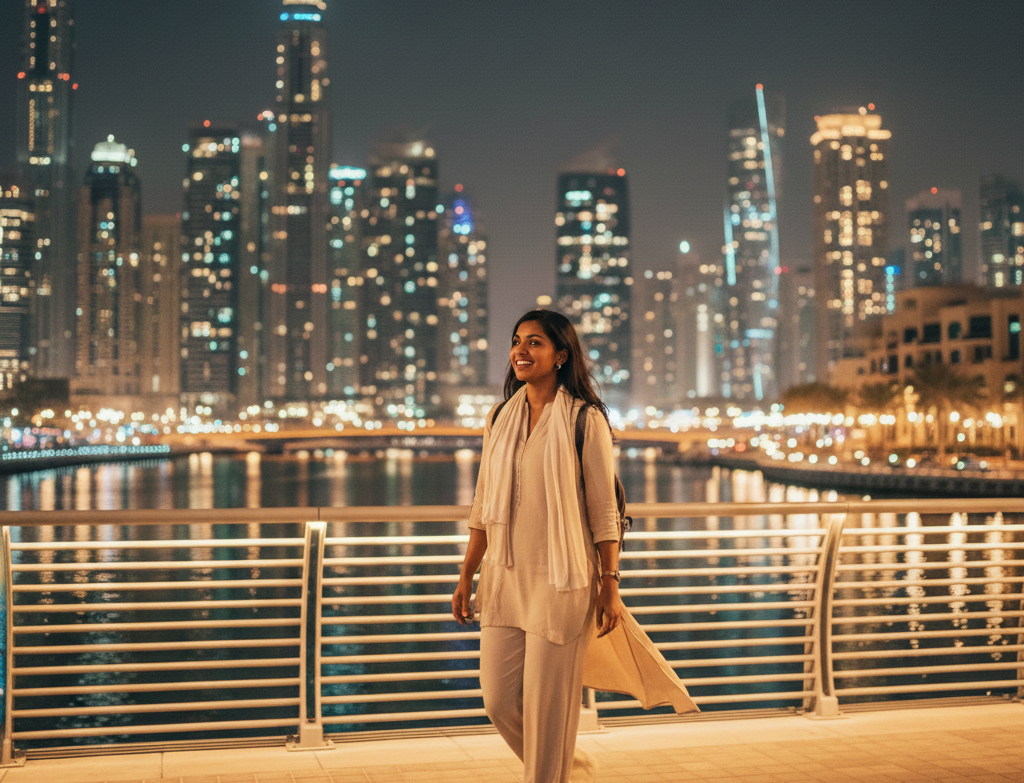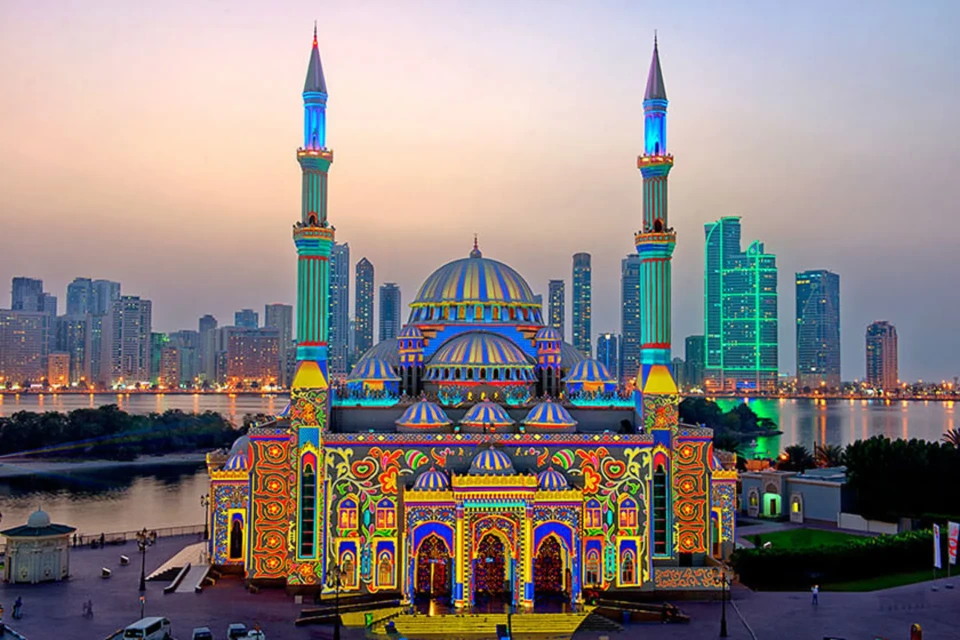THE 17 BEST Things to Do in Zanjan
Zanjan, an extraordinary and less-explored city in northwestern Iran, boasts unique attractions that are worth discovering. Join Gulf City Pedia to introduce you to some of the captivating sights in this city.”Join Us to Explore Zanjan’s Attractions: Get to Know the Charms of the City”
Gonbad-e Sultanieh, Zanjan
On the route from Tehran to Zanjan, amidst a vast plain, Gonbad-e Sultanieh stands proudly with its turquoise-tiled brick dome. This historical structure, renowned as the world’s largest brick dome, is called Gonbad-e Sultanieh. It was commissioned by Oljeitu or Sultan Mohammad Khodabandeh, the ruler during the Ilkhanate period, and is said to serve as his mausoleum. This remarkable dome, also known as the Sun Clock, was registered on the UNESCO World Heritage List in 2005. Interestingly, in ancient times, Gonbad-e Sultanieh was used as a sundial.

Dash Kasan Temple
Dash Kasan, or the Dragon Temple, is the remnants of a unique temple dating back to the Ilkhanate period. In Dash Kasan, meaning “stone cutter” in Turkish, you’ll witness a fascinating blend of Iranian and Chinese architecture rarely found elsewhere. After the Mongol invasion of Iran, dynasties with Mongol roots gradually embraced Iranian culture and architecture, attempting to adopt an Iranian identity. The Ilkhanids were no exception, as seen in the extraordinary dragon motifs in Dash Kasan, located near the beautiful village of Veyr. Moreover, local people have numerous peculiar stories about the nocturnal activities of jinn (supernatural beings) in this temple.
Zanjan Laundry Museum
In the past, before the advent of washing machines, and when people often went to riverbanks to wash their clothes and utensils, Zanjan established a place for free, round-the-clock washing of clothes and utensils for the public. Today, it is known as the Zanjan Laundry Museum or the Ethnography Museum of Zanjan and is considered one of the city’s most famous attractions. The museum consists of various basins with different purposes, including almost clean clothes basins and utensil washing basins.
Zanjan Traditional Bazaar
At the heart of the old city, Iran’s longest bazaar, the Zanjan Traditional Bazaar, is situated, pulsating with the hustle and bustle of buying and selling. This bazaar, with 56 main and subsidiary entrances, has been a lively hub of commerce since ancient times. The bazaar intertwines with the city’s entire communication network. Alongside the market alleys, numerous caravanserais and timchehs (domed arcades) are placed, offering a delightful sight.
Explore Zanjan’s hidden gems and immerse yourself in its rich history by visiting these captivating landmarks.
Bastan Castle and Genie Chimneys
Bastan Castle, located in Mahneshan County near Zanjan, stands right next to the mythical Genie Chimneys. Also known as Kohan Dez Castle, it has gained fame as Bastan Castle due to its proximity to the village of Bastan. Unlike other castles, this one has a peculiar design, incorporating structures resembling Genie Chimneys, giving it a unique appearance.
Many travelers may have visited Zanjan without hearing the name of Genie Chimneys. Situated 113 kilometers from the city, Genie Chimneys are placed in a legendary and enchanting spot. Geologically termed as “hoodoos,” these formations result from erosion, leaving tall and slender pillars of sediments and rocks from the initial layers.”This was another of Zanjan’s attractions that we delved into.”
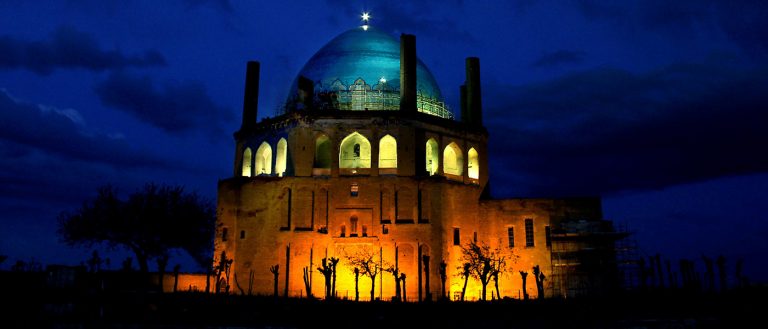
El Dagi Recreation Complex (Gavazang)
El Dagi Recreation Complex, also known as Bame Zanjan, is nestled in the northernmost region of Zanjan, at the foothills of Gavazang Mountain. It stands out as one of the recreational and tourist centers of the city, offering facilities such as wooden pavilions, coffee shops, boating, a restaurant, a mill, and an artificial waterfall.
Gavazang is a mountain that overlooks this recreation site and was once one of the most important areas for nature enthusiasts and mountaineers in Zanjan. Today, it has transformed into a complete recreational destination where families and tourists can experience pleasant moments. The green surroundings and numerous pavilions attract many locals and visitors for relaxation, enjoying the view of Zanjan, strolling by the artificial lake, and indulging in café and restaurant delights.
Zanjan Grand Mosque
In the heart of the old city, near Zanjan Bazaar, lies the Grand Mosque. Built by Abdullah Mirza Dara, one of the sons of Fath Ali Shah Qajar, this mosque is a four-iwan structure adorned with seven-color tiles in Seljuk style, featuring floral and geometric patterns and stucco decorations, all indicative of the Qajar era’s architectural style.
Zanjan Saltmen Museum
The Zolfaghari Mansion is one of the remaining structures from the Qajar period, initially serving as both an administrative and residential building for Zanjan’s rulers. Today, it is recognized as the Zanjan Archaeological Museum, where visitors can witness mummies of saltmen with long white hair and beards dating back to the Achaemenid era.
Haj Dadash Traditional Bathhouse
Haj Dadash Traditional Bathhouse stands as one of the historical landmarks in Zanjan, preserving its structure over the years. With minimal modifications and charming decorations, it has transformed into an attractive venue for both tourists and locals. Adorned with yellow, dark blue, light blue, and turquoise tiles, this bathhouse offers a unique visual experience.
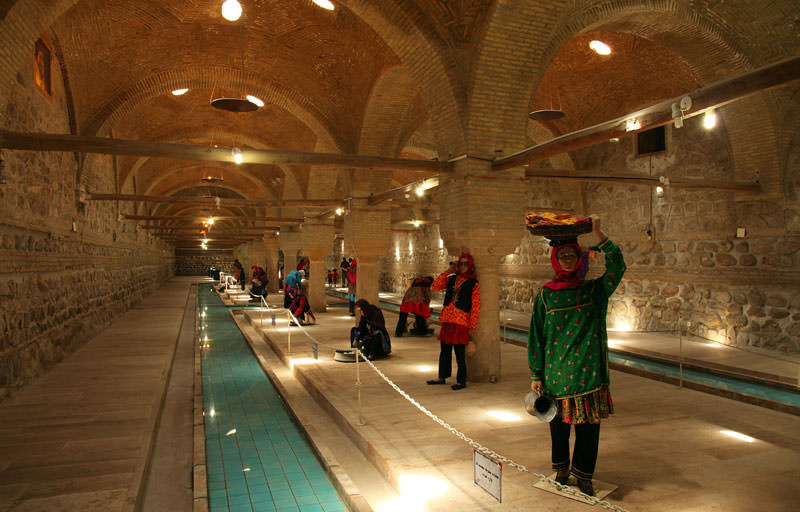
Khanum Mosque
Belonging to the Qajar period, Khanum Mosque boasts distinctive architecture, setting it apart from most mosques built in Iran. Unlike typical mosques, Khanum Mosque lacks a dome but features two slender and short minarets adorned with beautiful tile and brick decorations. Situated in the elevated Fakhr al-Dawla neighborhood in Zanjan, this mosque was constructed upon the request of a powerful Iranian woman named Jamileh Khanum, the daughter of Hossein Qoli Khan Nazem al-Adl. Consequently, it became known as “Khanum Mosque.”
Kahneh Zanjan Bridge
On the southern outskirts of Zanjan, along the route to Kurdistan, the historical bridge known as Kahneh Zanjan or Mir Bahad-din Bridge spans the Zanjan River. Constructed entirely from bricks, the bridge’s larger arch features an inscription in cursive script, marking the construction date and invoking the sacred name of Ali. This historic bridge, also known as Mir Bahad-din Bridge, traces its roots back to the Qajar era during the rule of Naser al-Din Shah Qajar. It is listed as a national heritage site in Iran.
Ala Daghlar Hills
The colorful mountains and hills of Ala Daghlar showcase various hues of brown, green, red, yellow, orange, and white. When these hills absorb rain, the wet clay soil creates a mesmerizing landscape. Traveling from Zanjan towards Mahneshan, you can witness the breathtaking view of these vibrant and picturesque hills.
Par Lake (Khandaghlu)
Nestled within a vast plain, Par Lake presents a beautiful panorama resembling an oasis in the region. Known by names such as Par, Khandaghlu, and Shurghul, it stands as the only natural lake in Zanjan province. Par Lake is also considered one of the lesser-known tourist attractions in the city of Mahneshan, offering a tranquil and enchanting retreat.
Shahrshar Waterfall
Shahrshar Waterfall, the only recognized waterfall in Zanjan, is situated in the northwest of the city amid rocky landscapes in the beautiful Taham region, not far from the artificial Lake Taham. The transparent water of the waterfall, surrounded by trees immersed in water, creates a scenery reminiscent of paintings and postcards.
Kotleh Khor Cave
Kotleh Khor Cave holds the title of the world’s largest dry-cave, located 80 kilometers south of Zanjan in the southern Khodabandeh region. Adorned with hanging colorful stalactites, this cave features three levels with main passages and numerous sub-tunnels. The vicinity of this astonishing cave also offers recreational facilities for the comfort of tourists.
The cave has extensive unexplored sections, with only professional spelunkers having access to some areas. The accessible part, available for public visits, is still vast and lengthy. If you are interested in caves, stalagmites, and stalactites, you should allocate at least two hours to explore the captivating interior of Kotleh Khor Cave.

Experts believe that this cave is almost contemporaneous with Ali Sadr Cave in Hamedan. However, there are two main differences: firstly, Ali Sadr Cave has water, while Kotleh Khor is entirely dry, allowing visitors to walk inside. Secondly, the limestone purity in Kotleh Khor Cave is higher, contributing to a more beautiful and mesmerizing interior appearance.
Qizil Uzan River
Qizil Uzan River stands as a natural attraction and spectacle in Zanjan, renowned for its reddish color. Originating from the Forty Springs Mountains in Kurdistan, this river flows through the foothills of Afshar in the vicinity of Khodabandeh, entering Zanjan. Qizil Uzan River plays a crucial role in the region’s agriculture and presents captivating and scenic surroundings.
Popaee Ski Resort
Located 45 kilometers southwest of Zanjan, in the mountainous region, the extensive 80-hectare Popaee Ski Resort is situated just three kilometers from the center of Ijrud. With gentle slopes, this ski resort is suitable for both regular people and amateur skiers due to its manageable inclines.
Frequently Asked Questions:
1. How many entrances does Zanjan’s Bazaar have?
– The bazaar has 56 main and subsidiary entrances, forming an extensive network throughout the city.
2. Who built Khanum Mosque?
– Khanum Mosque, situated in the elevated Fakhr al-Dawla neighborhood in Zanjan, was constructed upon the request of Jamileh Khanum, the daughter of Hossein Qoli Khan Nazem al-Adl.
3. Where is Zanjan’s only waterfall located?
– Shahrshar Waterfall, the sole recognized waterfall in Zanjan, is situated in the northwest of the city amid rocky landscapes in the beautiful Taham region, not far from the artificial Lake Taham.
4. What is the name of the world’s largest limestone cave?
– Kotleh Khor Cave holds the title of the world’s largest dry-cave, located 80 kilometers south of Zanjan in the southern Khodabandeh region.
5. What is the red river in Zanjan called?
– The red river in Zanjan is known as Qizil Uzan River, famous for its reddish color.

